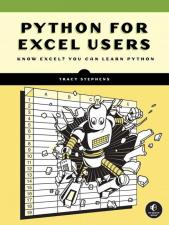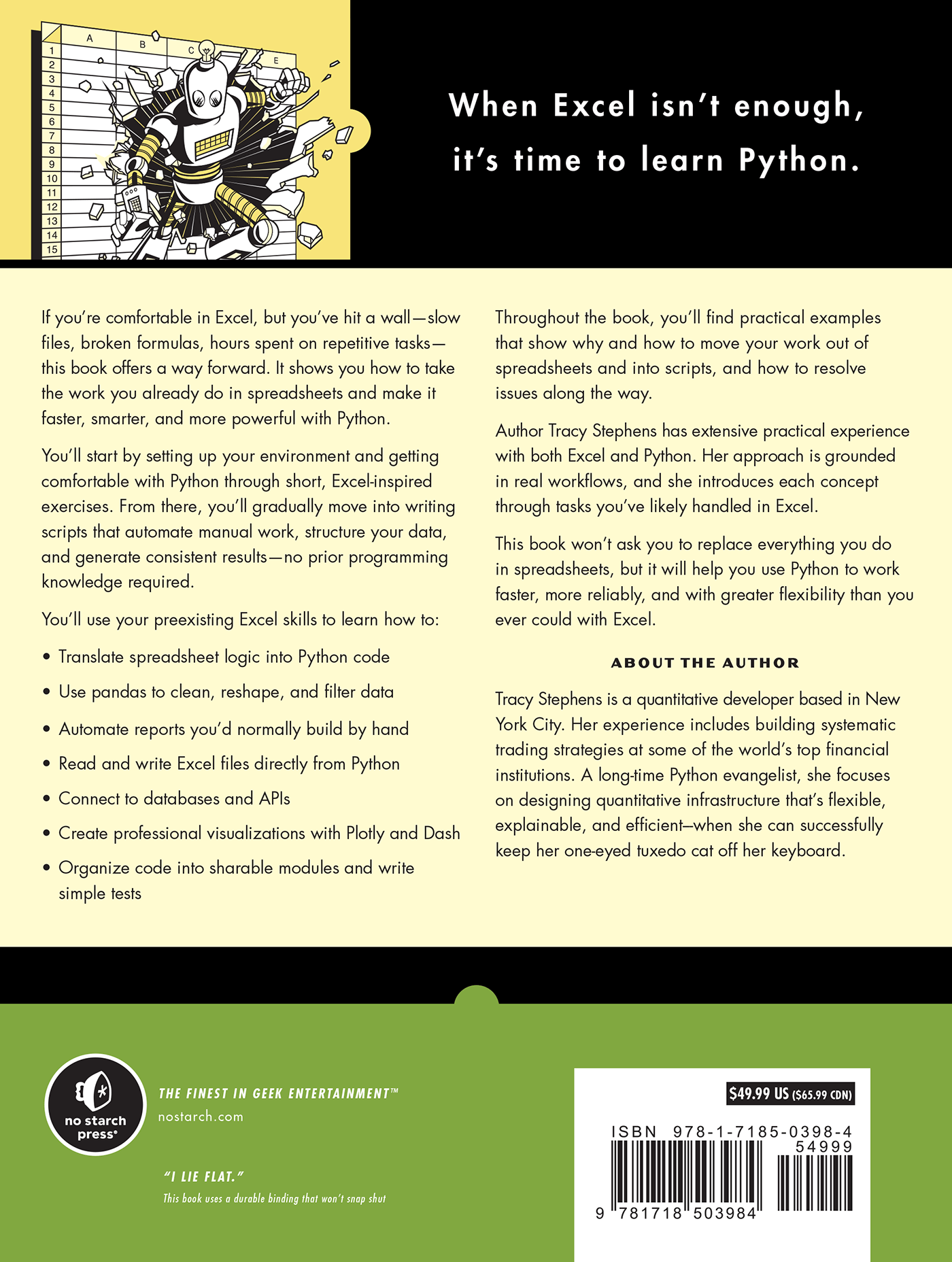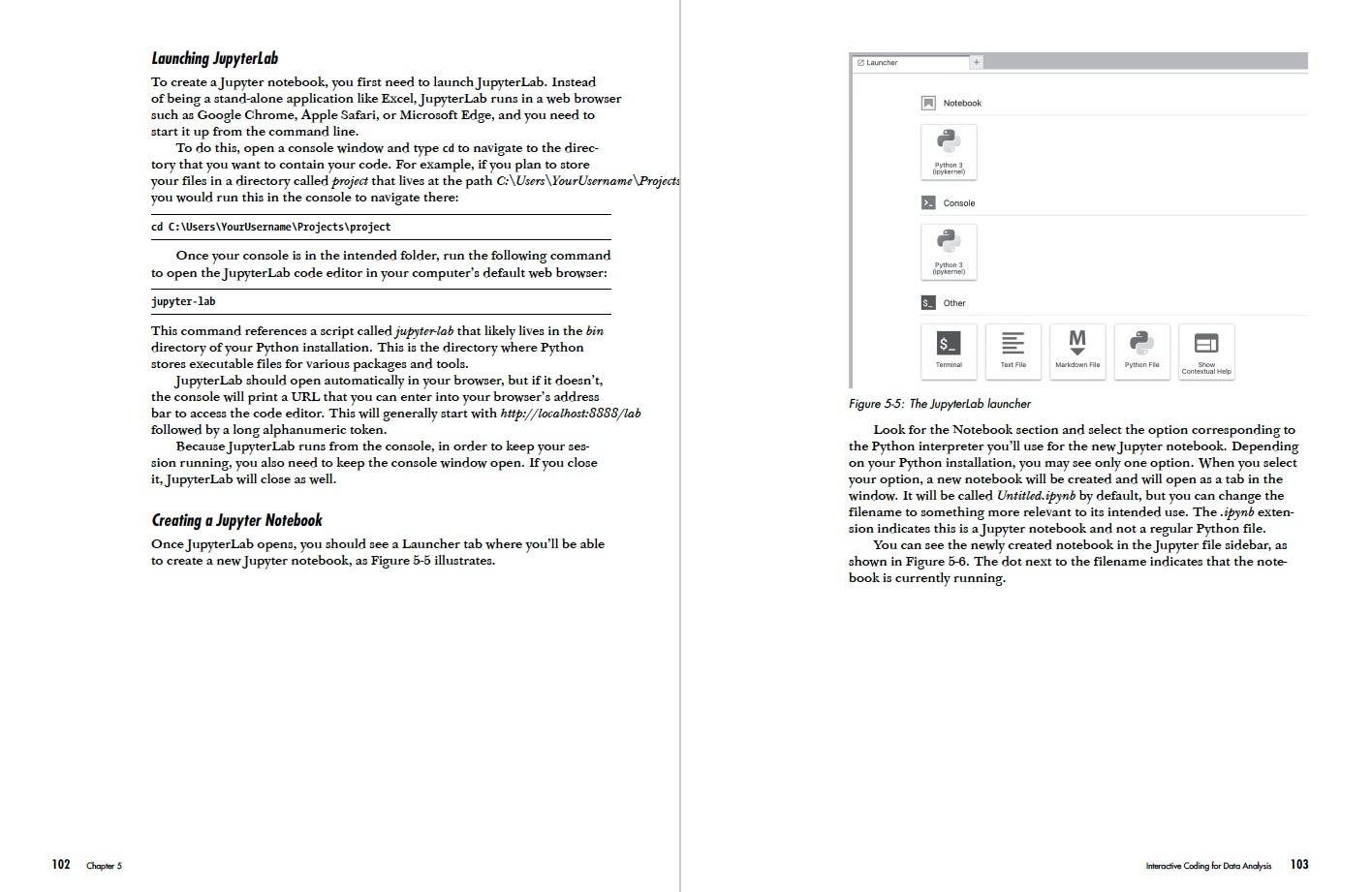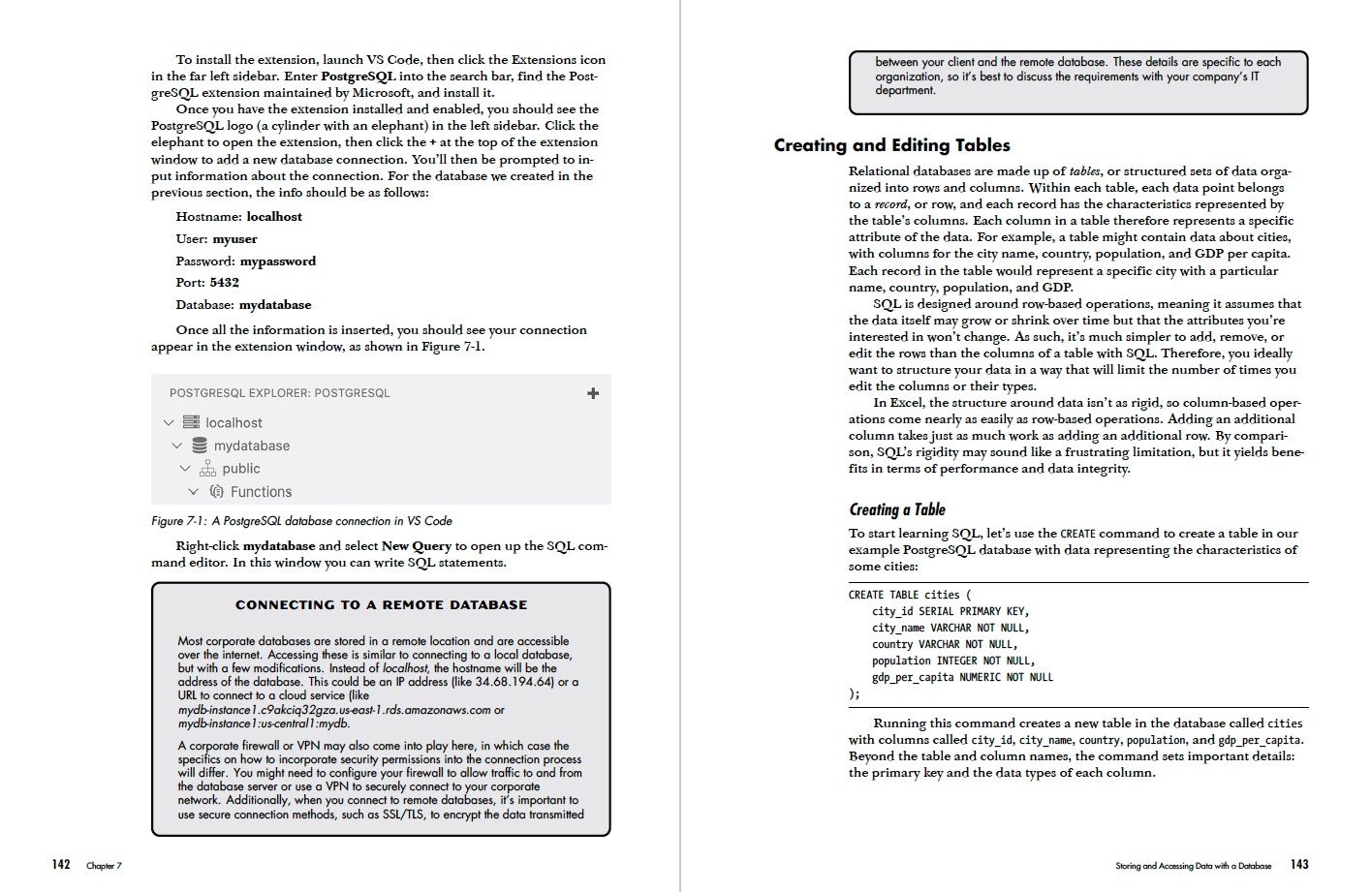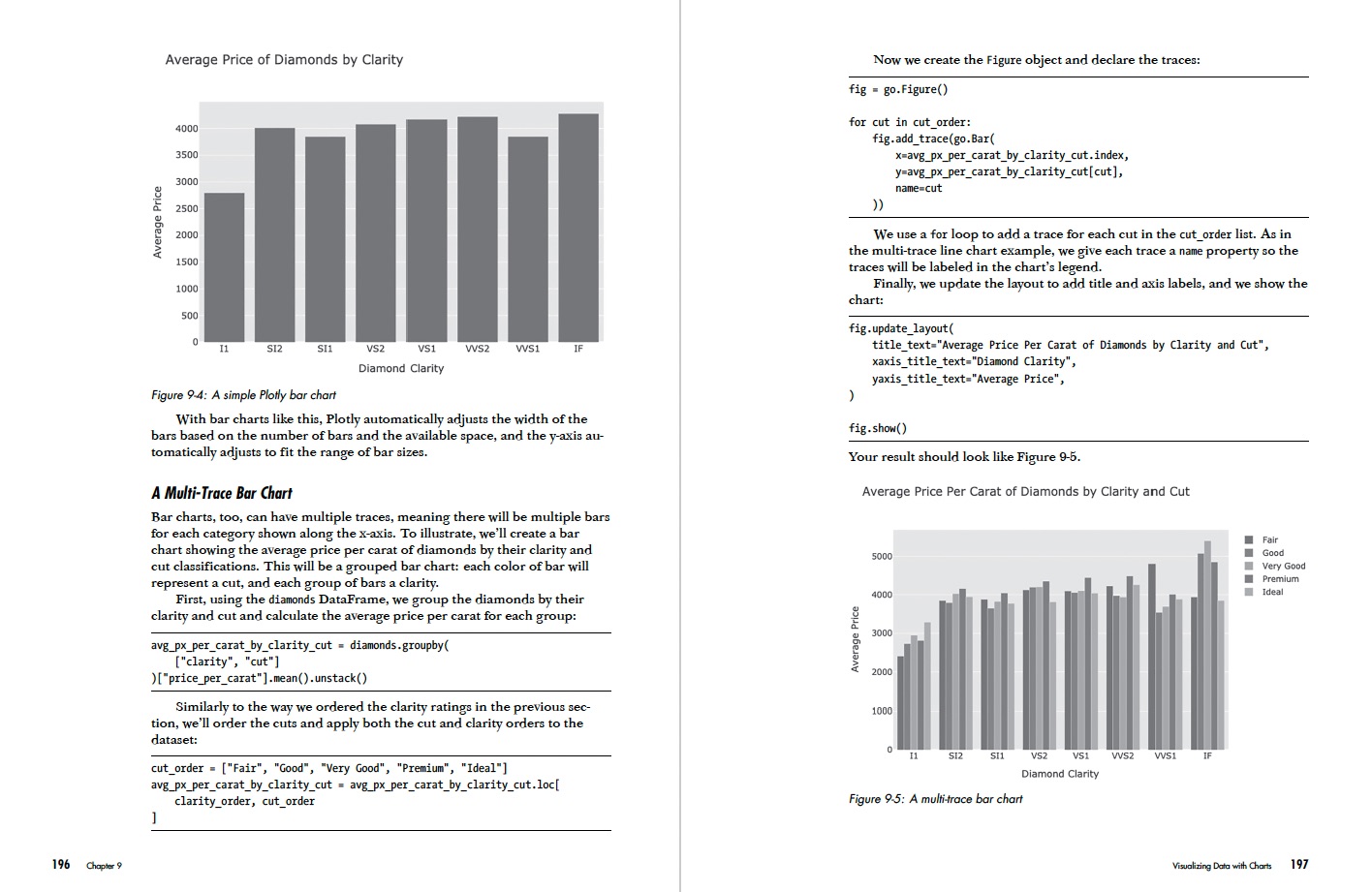Introduction
PART I: FROM SPREADSHEETS TO CODE
Chapter 1: Python Setup Essentials to Get You Started
Chapter 2: Python Concepts Explained Through Excel
Chapter 3: Creating Automations with Python Scripts
Chapter 4: Keeping Track of Code with Version Control
PART II: DATA ANALYSIS DONE RIGHT
Chapter 5: Interactive Coding for Data Analysis
Chapter 6: Data Manipulation Made Easy
Chapter 7: Storing and Accessing Data with a Database
Chapter 8: Retrieving External Data with APIs
Chapter 9: Visualizing Data with Charts
Chapter 10: Sharing Data with Interactive Reports
PART III: CRAFTING GOOD CODE
Chapter 11: Writing Simple, Scalable Code with Classes
Chapter 12: Debugging and Testing Your Code
Chapter 13: Three Habits for Effective Coding
Afterword
The chapters in red are included in this Early Access PDF.
View the Copyright page View the detailed Table of Contents View the Index

